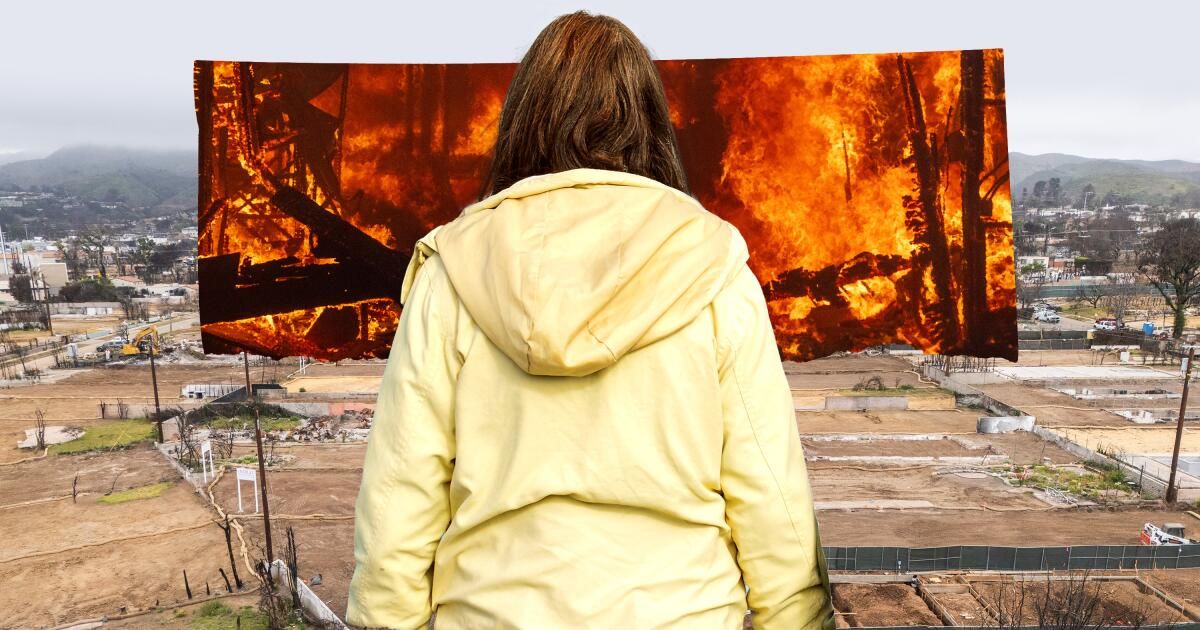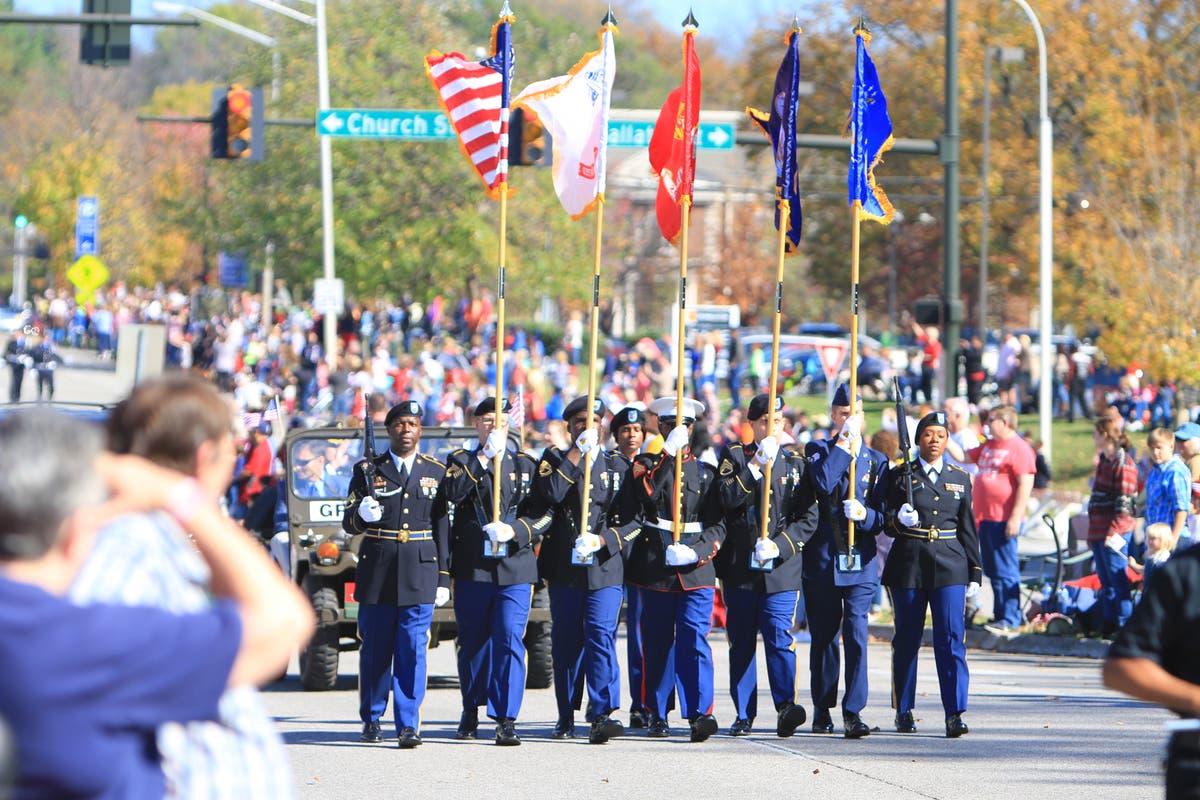In the first months after the forest fires of Los Angeles, who took home the palisades of my family, I designed a master of compartmentalization. I felt little emotion, focused on the laser to find a place for our family to live and acquire essential elements: toothbrushes, oral rinse, underwear and sports shoes. Making sure we were eating and drinking enough water. Hoping that the dog would not urinate in the hotel elevator again. Pack school lunches in the dawn of cloudy eyes while we search the Internet for rent.
As a teacher, I returned to the teaching classes, dancing the loss and cracking macabre jokes to my own coast, and said that the fires were the best exercise of Marie Kondo to disapprove. “Just burn everything!” I touched my students, who looked at me with a quiet concern. I decided to adapt to the new reality at all costs, because the adaptation meant surviving.
Despite my best efforts, pain got, unexpected and stealthy with its delayed arrival. In mid -April, I found myself involuntarily remembering the first night of the fire. I returned to that Chinese restaurant in the middle of the city where we had gathered our first night away from home, hoping that we would return in a few days, but the delicious food suddenly became tasteless, our anxious knot stomachs. About 20 minutes later, our phones rang and buzzed with notifications that smoke alarms and sprinklers were turning off. I felt that our house was burning in my body, in my cells, the flames that devoured the grounding forces of our lives: our home and community. The mountains we walk. Family streets where we walked to our dog, where our children learned to ride a bike while we ran breath behind them, barking breath.
Now that the semester is over and summer is here, the pain has become even more palpable, heavy and real. Other fire victims have also confessed that it is hitting them harder now than the acute crisis has decreased. We are no longer collecting donations of clothing or wishing to have a strainer or worry about running out of time in short -term rent. Most of us have accepted some type of new routine, together with the confrontation that This is all. This is our reality. Recently I went to see my doctor who had lived in Palisades Bluffs with his family for more than 40 years. When I asked him how he was held, he said: “Everyone else has moved on,” and then began to cry. “I know,” I admitted. “It's true. Except for us.”
When feelings associated with loss do not arise completely for weeks, months or even years after a tragedy, psychologists refer to it as a delayed pain or complicated pain. I talked to the Jungian therapist and analyst Stephen Kennealley about why the pain is appearing for many victims of Los Angeles fire now, six months after the disaster and what we can do to face. “Resilient people may need to postpone pain out of necessity,” he said. “However, eventually, the question of how to take into account losses, often as well as the world seems to have advanced. Parts of the psyche can barely believe what has happened, even while it seems that it has recovered.”
Kenneally added that over time, those afflicted must face the purpose of the loss, often in silence contrast to the external signs of resistance. If you are fighting with delayed pain, here are some coping strategies that could help, regardless of the timeline.
Connect with others experiencing a similar pain
When I meet neighbors who also lost their homes in the fires, there is a mutual understanding that we do not have to pretend that we are fine. The other night, I ran into a fellow father in an ice cream shop and when I asked how I was, he said, with an unfortunate smile, “depends on the day.” He said that the “fire group” and the “non -fire group” were in their daily interactions, and only people in the “fire group” could really understand the depth of our collective loss, how it still followed us as a evil shadow.
“We are no longer collecting donations of clothes or wishing to have a strainer or worry about running out of time in short -term rent. Most of us have accepted some type of new routine, along with the confrontation that this is.”
In addition to talking to a advisor or grieving therapist, looking for a support system can be vital. Finding comfort in my community helps me feel more connected to those around me and myself. However, it is important not to compare its grieving process with that of others. Kenneally emphasized the nuanced and idiosyncratic nature of each person's trip through the loss: “How it moves through this is a deeply personal and mysterious process,” he said.
Take the time to feel your feelings
Sitting memories of what was lost is extremely painful, but it can finally help one heal. “We must also maintain a certain tension, a paradox, even a disorientation, since the psyche cries and frees obsolete forms and elevates old values and memories in a deep place of honor,” KenneALLY said. “Without this, pain runs the risk of feeding suspicion complexes that insist that the world only has sadness and threat, instead of meaning and renewal.”
The first time I really cried was when I remembered the night we discovered that the recreation center was burning. I remembered the innumerable Saturdays that we spent inside that gym, year after year, seeing our son and his teammates play basketball. I could still feel cold and hard stands under my jeans, the acute whistle of the referee, the bell shot just when a child threw a triple, the echo sound of the basketball ball that undoubted on the court. I still imagined my son playing collection games until the afternoon, sweaty and free in his playground.
Kenneally says that feeling pain is an important tool to address the loss, as well as telling the story of one, attending the body, expressive arts and a conscious movement.
Recognize that there is no linear path to processing pain
Sometimes I think I've finished crying until I realize that I haven't done it. A book that I promised enthusiastically lending a friend until I remembered that this book burned with the hundreds of books that had been collected for decades. A favorite dress found in a second -hand store in Joshua Tree that I hoped to wear, but then, after a quick stable of repentance, I realized that he left, along with everything else. In a traffic light, my gaze will travel magnetically to the north to the mountains of Santa Monica covered in a golden carbonized brown, and I travel back to walk those paths, surrounded by sage, lavender and blue birds. My stomach still falls when “Start” appears in the automobile navigation system established in a direction that no longer exists for us, and yet our old key of the house firmly places my keychain.
I am trying to give me the other grace and remember that the pain is not finite, there is no ordered end point. A wise friend once told me that pain is like a room in a house. At first, you can enter many times, even feeling that it will never leave it, but over time it will visit the room less and less as life falls with new joys and sorrows. And yet, that room remains there as a space to cry, to remember, until it becomes part of who you are, another part of your story.












